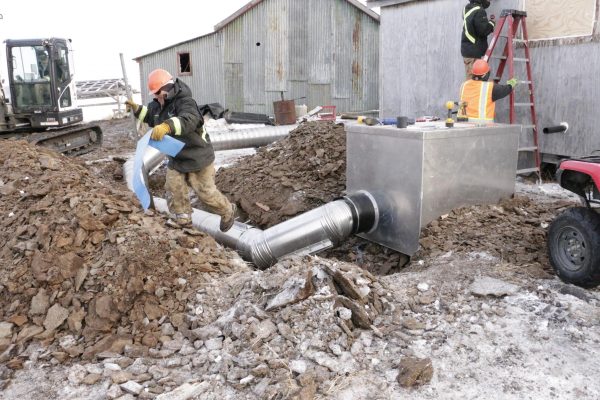
In two major coronavirus relief bills, Congress sent Alaska tribes huge sums in direct payments. But the bounty was uneven: While the largest Alaska tribe got $6,000 per person, one tribe that reported having only three members received nearly $1 million per person.
It started in 2020 with the CARES Act. It resulted in payment totaling more than $300 million to Alaska tribes and Native corporations. That turned out to be modest compared to the tribal payments that came when Congress passed the American Rescue Plan Act. ARPA sent Alaska tribes $1.4 billion.
It’s an unprecedented amount of money and will change how Alaska tribes plan their future, said Teresa Jacobsson, chair of the Alaska Tribal Administrators Association.
“This is just really an amazing and special time for tribes to have the resources to meet critical needs in the communities that have not been met,” she said, citing a board member who put it to her in those terms.
More than 220 Alaska tribes got direct payments from both coronavirus bills. The average allocation was nearly $8 million, and every tribe got at least $2.6 million, even the 18 Alaska tribes who have fewer than 100 members.
(A handful of tribes are still waiting for their full distribution. The Treasury Department had trouble sending to some bank accounts, among other delays.)
Jacobsson said tribes are buying ambulances and equipment for their health clinics and planning utility upgrades. She said it’s a lot to manage for a smaller tribe used to an annual budget of maybe $300,000.
“We have people that have called and said they’re scared and they’re overwhelmed,” she said. “But they’re also grateful and excited at the same time.”
The Harvard Project on American Indian Economic Development did a deep dive on the ARPA distribution to tribes, focusing on the per-person amount each tribe got. What they found is that small tribes got an outsized share of the funds, thanks to the formula the government used to distribute the money.
Harvard Project co-director Joseph Kalt said once ARPA became law in March, the Treasury Department was under pressure to quickly send the money to the tribes.
“But in the process, they produced results — allocations of monies — that I think are fairly judged to be highly inequitable,” he said.
Two tribes really stood out in the Harvard Project analysis: one in Alaska and one in California. They each reported having just three members and got around $3 million from the two coronavirus bills.
One of those was Telida, in Interior Alaska. Telida Chief Steven Nikolai Sr. put the size of the tribe somewhat higher. He said Telida has “about five” members. That still leaves Telida with more than $500,000 per tribal member.
Nikolai said the tribe hasn’t decided how to spend its money. He and other tribal members live in the neighboring village of Nikolai now, having left Telida years ago, after the school closed. They are thinking about installing piped water in their homes, he said, so they don’t have to fetch water from the river.
Kalt, from the Harvard Project, doesn’t begrudge the tribe’s good fortune, but he said Telida is very much the exception.
“Just under 90% of all citizens are in tribes that got less than $10,000 per capita,” Kalt said.
Alaska’s largest tribe by far is the Central Council of the Tlingit and Haida Indian Tribes. It received nearly $200 million from the two coronavirus bills. But with more than 32,000 members, that amounts to only $6,000 per person.
The reason small tribes did well under ARPA starts with how Congress wrote it. The law specified that the first billion dollars should be divided equally among the tribes. It came to $1.64 million per tribe. The Treasury Department distributed the rest by tribal population and the number of employees, but with a million dollars minimum per tribe. So every tribe, even if it has just a few members and an administrator, became eligible for at least $2.64 million in ARPA funds.
In the village of Circle, tribal grants administrator Toni Wiehl keeps her eye on deadlines and program rules. So far, Wiehl said, her tribe of 300 has built six cabins and made improvements to the homes of the 85 members who live in Circle. The tribe also supplied groceries so that members didn’t have to risk infection with a trip to a Fairbanks supermarket.
“We purchased, [for] a lot of the households that are under-income, wood and fuel,” she said. “We also replaced everyone’s tanks and stands for the Toyo stoves. We’ve done a lot of great things for the community.”
Circle received $4.4 million from the two coronavirus bills. But that’s just the direct tribal payments. Wiehl said she participates in weekly calls to learn about other funds in the COVID relief bills that tribes have to apply for separately.
“A lot of tribes don’t know what they’re eligible for,” she said. “Nor do they know the loopholes.”
And the clock is ticking. Tribes were on tight timelines to spend CARES Act money. A lot of it went to buy supplies and was distributed to tribal households to pay utility bills and for improved bandwidth for online school and work.
Tribes have more time to decide what to do with their ARPA funds, which can be spent on capital improvements. Still, if tribes don’t allocate their ARPA money by the end of 2024, they risk having to give it back.
[Sign up for Alaska Public Media’s daily newsletter to get our top stories delivered to your inbox.]
Liz Ruskin is the Washington, D.C., correspondent at Alaska Public Media. Reach her at lruskin@alaskapublic.org. Read more about Liz here.





